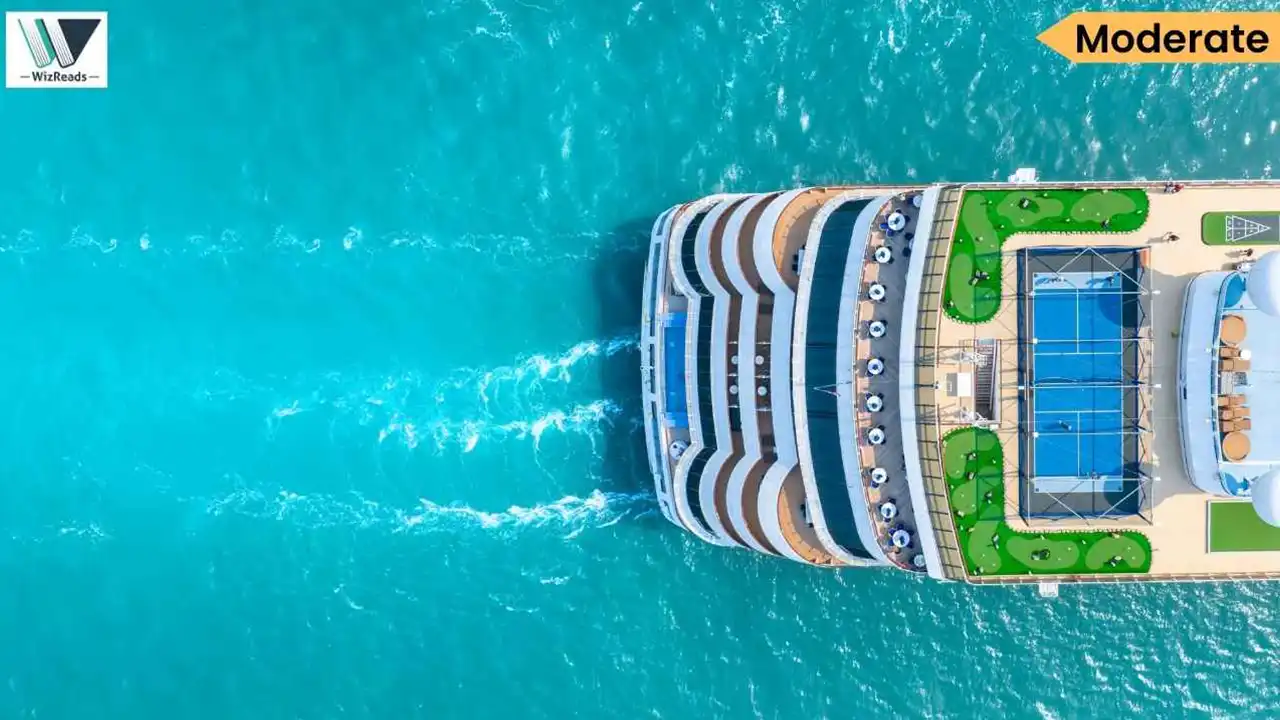
Newsletter Subscribe
Enter your email address below and subscribe to our newsletter

Enter your email address below and subscribe to our newsletter

When megayachts worth hundreds of millions drop anchor in pristine Mediterranean waters, what hidden costs ripple through marine ecosystems? These medium difficulty passages explore the complex interplay between high-end tourism and ecological preservation, encouraging readers to navigate the nuanced relationship between economic incentives, regulatory gaps, and environmental protection in some of the world’s most treasured coastal regions.
Read these hard RC passage(s) in Science Technology and Environment and answer the question(s) that follows. You can choose the GMAT style Reading Passage and the question or the GRE RC variant and answer the GRE-style question. Even better, you could solve both.
On a pristine afternoon in the Mediterranean’s Côte Azur, the 85-meter superyacht Aurelia dropped anchor directly above the protected Posidonia seagrass meadows near Saint-Raphael. Within hours, the vessel’s massive chain had carved destructive furrows through centuries-old marine vegetation, obliterating critical habitat that supports dozens of endemic species. This incident exemplifies a broader crisis where unchecked opulence systematically undermines marine conservation efforts across the world’s most ecologically sensitive coastal regions.
The environmental footprint of luxury megayachts extends far beyond their ostentatious presence in prestigious harbors. These floating palaces, often exceeding 100 meters in length, generate pollution equivalent to thousands of automobiles while their anchoring systems destroy irreplaceable seafloor ecosystems. Advanced wastewater treatment systems remain largely voluntary, and fuel consumption rates that dwarf commercial vessels underscore the disproportionate ecological burden these symbols of extreme wealth impose on marine environments. The industry’s carbon emissions have increased 300% over the past decade, yet regulatory frameworks remain woefully inadequate.
Despite mounting scientific evidence and environmental advocacy, meaningful regulation faces substantial obstacles. Port authorities depend heavily on megayacht tourism revenue, while international waters present jurisdictional challenges that wealthy owners exploit through strategic flag registration. The prestige infrastructure supporting this industry—from specialized marinas to bespoke service networks—creates powerful economic incentives that consistently override environmental considerations, perpetuating a cycle where luxury’s environmental costs remain externalized onto increasingly fragile marine ecosystems.
Which of the following titles best captures the central theme of the passage?
The passage presents a clear argument that luxury megayachts cause disproportionate environmental damage while regulatory frameworks remain inadequate due to economic incentives that consistently override environmental considerations. The title “Luxury’s Wake” captures both the literal wake these vessels leave and the metaphorical trail of environmental destruction, while “When Opulence Overrides Environmental Protection” reflects the author’s central thesis that unchecked luxury systematically undermines marine conservation efforts.
Correct Answer: Choice (C)

The proliferation of luxury megayachts in the Mediterranean generate multiple environmental challenges that threaten regional biodiversity, particularly in coastal waters near popular destinations like the French Riviera and Balearic Islands. Anchor scarring represents the most immediate concern, as traditional anchoring systems destroy centuries-old seagrass beds that serve as critical nursery habitats for numerous fish species. Additionally, megayachts produce disproportionate emissions relative to their passenger capacity, with diesel engines generating nitrogen oxides that contribute to coastal eutrophication. Wildlife disturbance patterns have also intensified, as increased vessel traffic disrupts migration routes of cetaceans and nesting behaviors of seabirds.
Addressing these multifaceted challenges requires coordinated policy interventions and technological innovations. Several Mediterranean ports have implemented restricted anchoring zones around vulnerable habitats, while emerging underwater mooring systems eliminate seabed contact entirely through suspended cable networks. Furthermore, enhanced tourism licensing protocols now mandate environmental impact assessments for vessels above specified tonnage thresholds, creating accountability mechanisms that encourage sustainable anchorage practices and operational modifications among yacht operators seeking access to protected marine areas.
The passage is primarily organized to:
The first paragraph identifies three specific environmental challenges (anchor scarring, emissions/eutrophication, wildlife disturbance) caused by megayachts, while the second paragraph describes various measures being implemented to address these problems (restricted zones, underwater mooring systems, enhanced licensing).
Correct Answer: Choice(D)